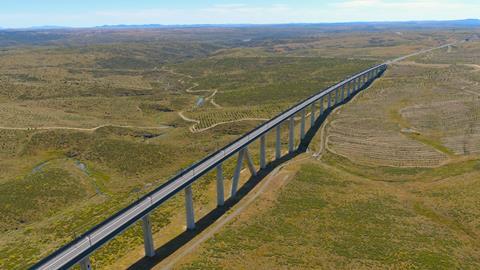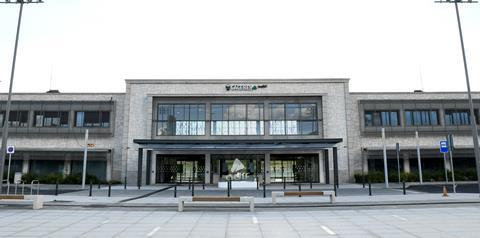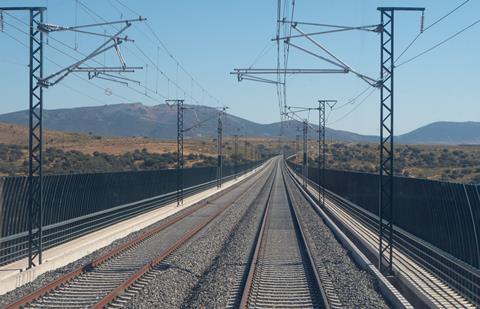
SPAIN: Passenger services began using an upgraded 193 km mixed-traffic route between Plasencia and Badajoz in Extremadura on July 19, following the inauguration of three sections of new alignment totalling 146 km by King Felipe VI the previous day.
In the longer term, the line is intended to form part of a high speed corridor linking Madrid with Extremadura and potentially Lisboa in Portugal.
The three new sections are:
- Plasencia to Cáceres, 72·1 km;
- Cáceres to Peñas Blancas (north of Mérida), 41·8 km;
- La Isla (west of Mérida) to San Nicolás (east of Badajoz), 32·0 km.
According to high speed infrastructure manager ADIF AV, the total cost of construction was €1·7bn, including connecting chords accessing the original main line south of Plasencia.

The project was conceived in 1990 as a medium to long term scheme to link Madrid and Lisboa by high speed rail. In 2003 it was envisaged that a 350 km/h passenger-only line could be completed by 2010, enabling a journey time of 2 h 45 min between the two capitals.
However, the plans subsequently evolved further, and in 2005 Spain’s Ministry of Public Works reached agreement with the Extremadura region to develop the route as a mixed-traffic line for a maximum speed of 250 km/h. The target completion date was subsequently extended to 2015.
The first construction contracts were awarded in autumn 2007, covering works between Mérida and Badajoz. This was followed by the Mérida – Cáceres section in 2008, and northwards in 2010-11. However, the euro crisis and recession meant that no contracts were awarded in 2011-14.

The double track line has been built to 1 668 mm gauge, but laid with sleepers designed to facilitate future conversion to 1 435 mm gauge. There are 23 viaducts, of which the longest are Valdetravieso (1 596 m), Río Tajo (1 488 m) and Almonte (996 m). There are two tunnels, Santa Marina (3 595 m) and Puerto Viejo (995 m).
In January 2021 ADIF Alta Velocidad awarded Bombardier European Investments, Alstom Transporte and Indra Sistemas a €85m contract to install ETCS Level 2 and ASFA Digital between Plasencia and Badajoz.

RENFE is initially operating two trains each way per day over the new alignments, at a maximum speed of 200 km/h. One is a new Alvia service operated by refurbished Class 730 electro-diesel trainsets, and the other is a re-routed inter-city train using Talgo coaches hauled by Class 334 diesel locos. Neither service enters Plasencia station; passengers must use a free connecting bus to and from Monfragüe.

The 25 kV 50 Hz electrification between Badajoz and Plasencia is scheduled to be completed in the first quarter of 2023, enabling speeds to be raised to 250 km/h.
Construction is underway on a bypass line which will eliminate the need for trains to reverse at Mérida, and on another section of new alignment east of Monfragüe as far as Talayuela. This will eventually be extended to join the 1 435 mm gauge high speed network at Toledo.

















